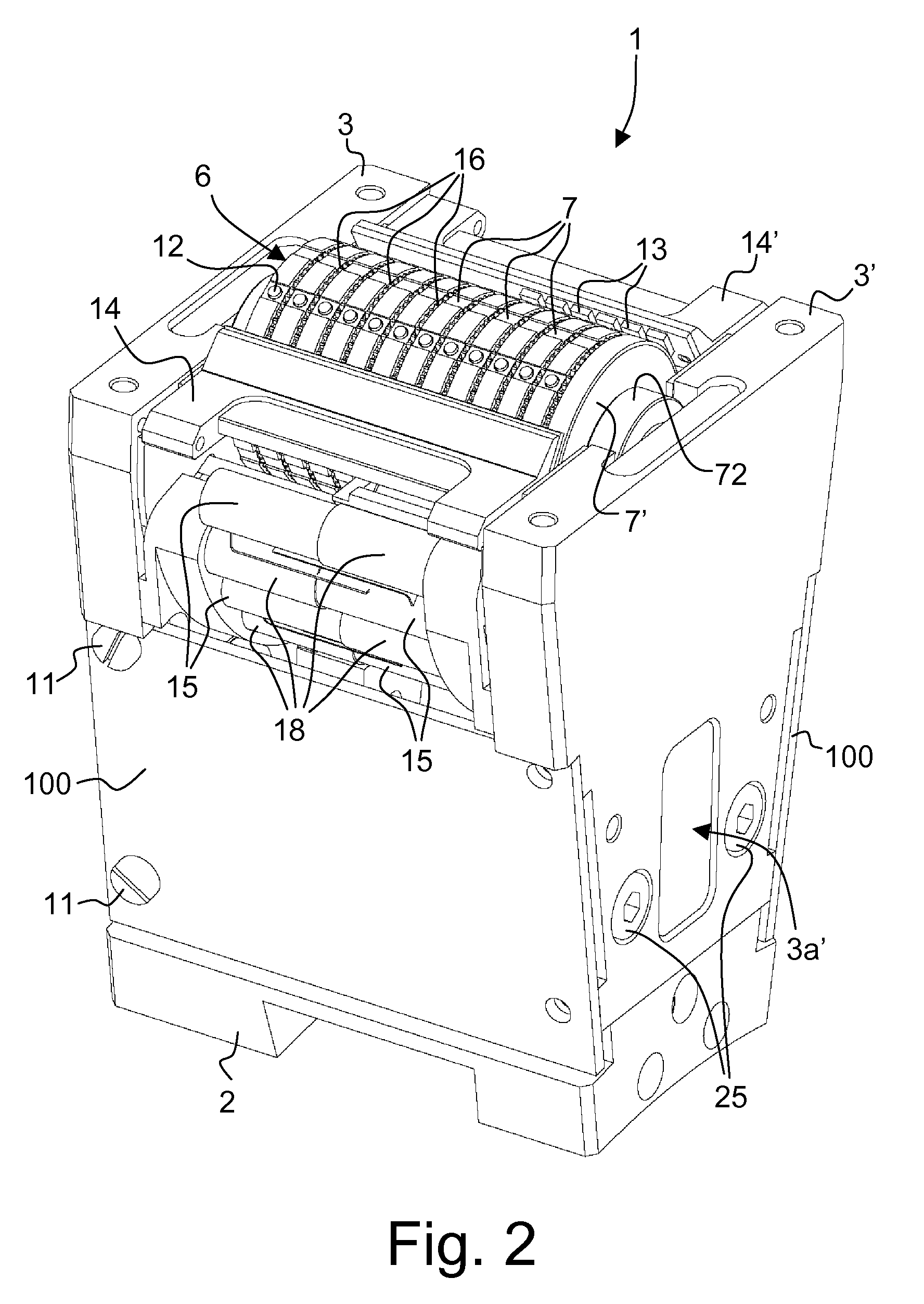Numbering device for typographic numbering
a numbering device and typographic technology, applied in typewriters, stamping, printing, etc., can solve the problems of incomplete sheets, no good printing whatsoever, and no adequate above-average approach,
- Summary
- Abstract
- Description
- Claims
- Application Information
AI Technical Summary
Benefits of technology
Problems solved by technology
Method used
Image
Examples
Embodiment Construction
[0053]FIG. 1 shows a first general perspective view of an embodiment of a numbering device 1 according to the invention. The numbering device comprises a casing with a bottom frame part 2 and a two-piece lateral frame part 3, 3′. The two-piece lateral frame part comprises two side frame parts 3 and 3′ (side frame part 3′ being not visible in FIG. 1) which are secured at their bottom ends to the bottom frame part 2 by means of screws 25 (visible in FIGS. 2 and 4). In the embodiment of FIG. 1, the upper part of the numbering device 1 is covered by a top cover member 4 which is secured to the side frame parts 3, 3′ through top screws 5. The cover member 4 is provided with an opening 4a through which emerges part of a numbering unit 6 comprising several numbering wheels or disks 7 disposed next to each other for rotation about a common rotation axis as this will be explained in a more detailed manner hereinafter.
[0054]The numbering device 1 is also covered on its sides by protective sid...
PUM
 Login to View More
Login to View More Abstract
Description
Claims
Application Information
 Login to View More
Login to View More - R&D
- Intellectual Property
- Life Sciences
- Materials
- Tech Scout
- Unparalleled Data Quality
- Higher Quality Content
- 60% Fewer Hallucinations
Browse by: Latest US Patents, China's latest patents, Technical Efficacy Thesaurus, Application Domain, Technology Topic, Popular Technical Reports.
© 2025 PatSnap. All rights reserved.Legal|Privacy policy|Modern Slavery Act Transparency Statement|Sitemap|About US| Contact US: help@patsnap.com



